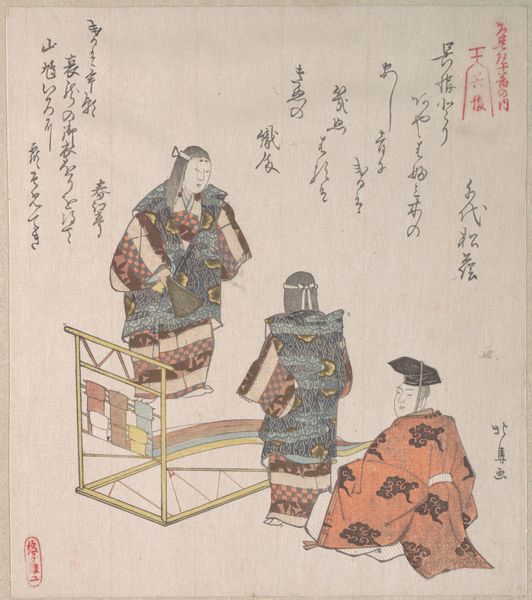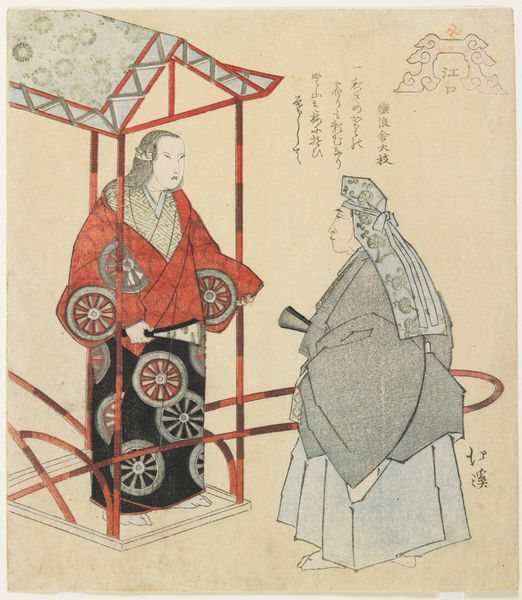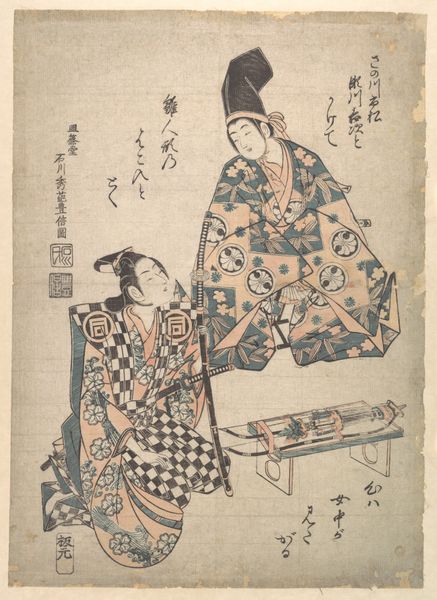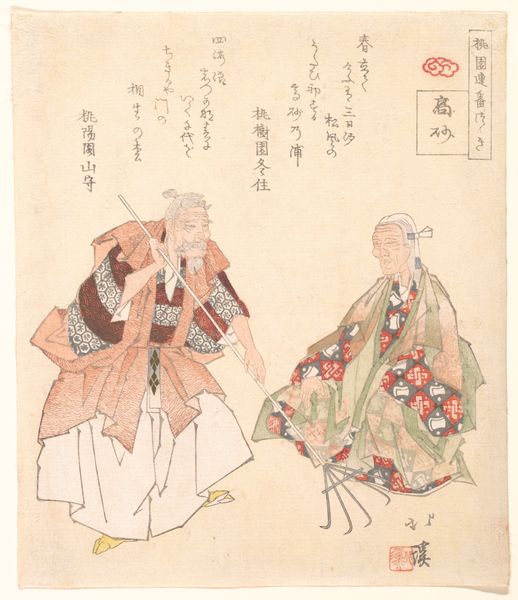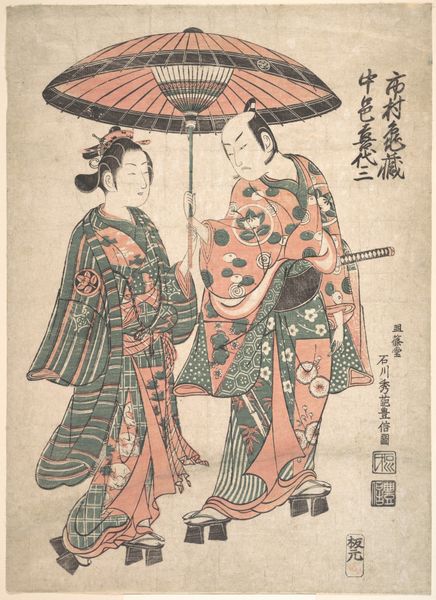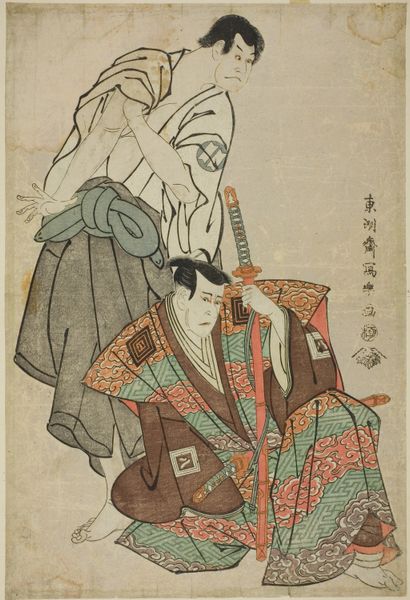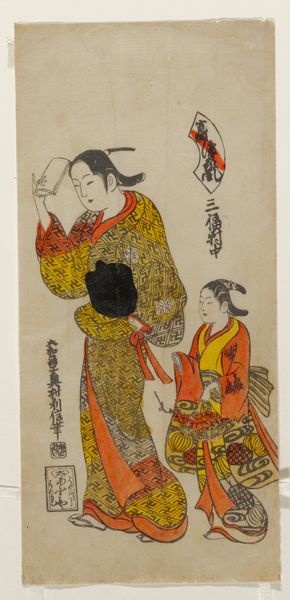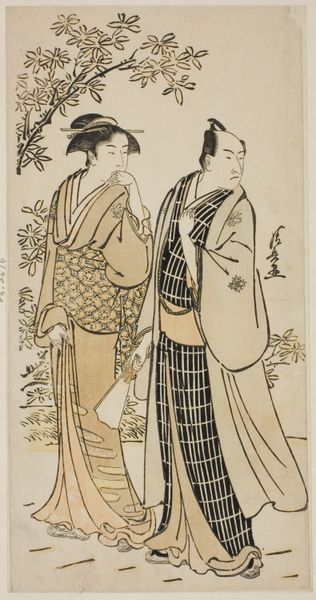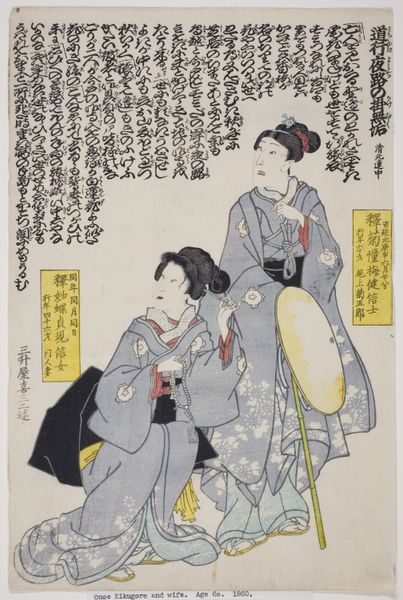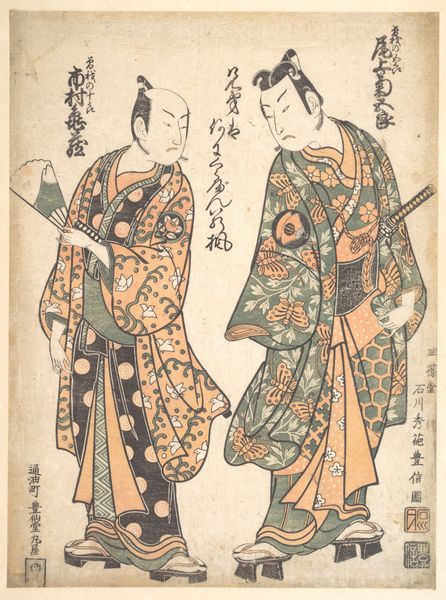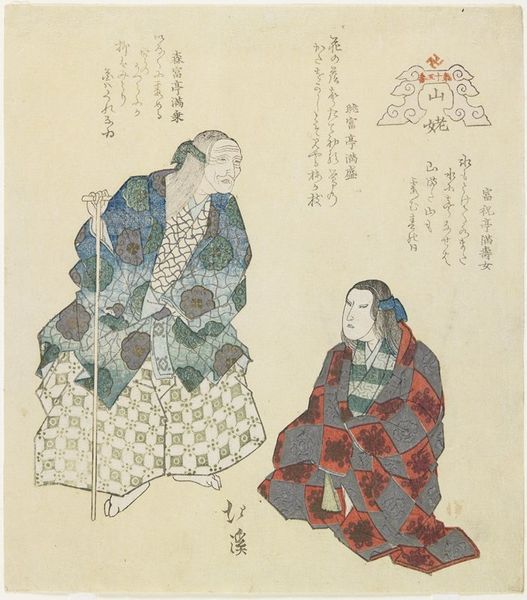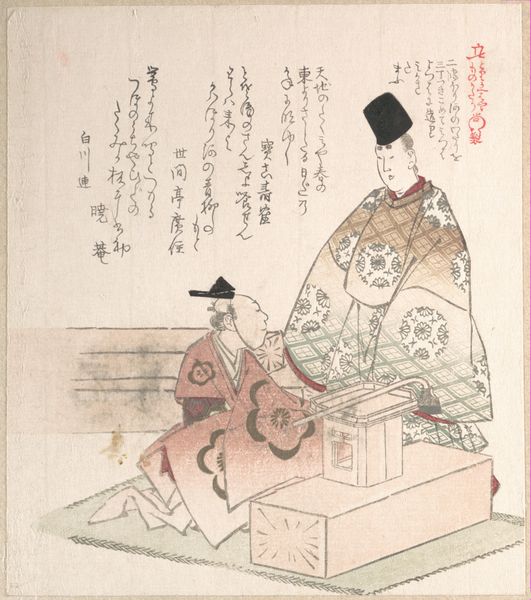
print, ink, woodblock-print
#
portrait
#
toned paper
#
narrative-art
# print
#
asian-art
#
ukiyo-e
#
japan
#
historical fashion
#
ink
#
woodblock-print
#
watercolor
Dimensions: 8 3/8 x 7 5/16 in. (21.27 x 18.57 cm) (image, sheet)
Copyright: Public Domain
Curator: Totoya Hokkei created this color woodblock print, entitled "Kureha Village," around 1832. It is currently held in the collection of the Minneapolis Institute of Art. Editor: My immediate reaction is how the patterned robes stand out. There’s something a bit eerie about their blank, white faces, almost like masks. Curator: Well, these figures are likely depictions of characters from Noh theatre. It was very popular then. Notice the meticulous detailing in the patterns. Woodblock printing in Japan had become a very sophisticated industry by this period. This isn’t just art; it's part of a larger system of production and distribution. Editor: Precisely! Consider the socio-cultural implications. Who was consuming these prints? How did their popularity shape Japanese society and ideas about performance and visual culture? The mass production made art more accessible. Curator: Access is key. The labour required to carve the blocks, prepare the inks from minerals and plants, print in multiple layers...it speaks to a network of skilled artisans working collaboratively to make these prints available to the broader population. These woodblock prints also impacted Western artists! Editor: Right! Hokkei’s work is a product of complex circumstances—both cultural traditions and material innovations in printmaking and broader economic changes. Museums have also certainly molded how people perceive Japanese artwork too. Curator: It's fascinating to think about this artwork as the convergence of artistic skill, societal trends, and material ingenuity, which prompts a reevaluation of how artistic expression can be democratized and valued beyond elite circles. Editor: Indeed. Looking at it now, it is less an isolated aesthetic object than it is a critical point that tells us about societal conditions from almost two centuries ago.
